Gallery walls are having a moment, and for good reason. They’re a fantastic way to personalize your space, showcase your personality, and add visual interest to any room. While modern and minimalist gallery walls are popular, there’s something uniquely charming about incorporating vintage elements.
A vintage gallery wall tells a story, whispers of history, and creates a warm, inviting atmosphere that mass-produced art simply can’t replicate. It allows you to curate a collection that feels truly personal and reflects your appreciation for the past.
This blog post is your ultimate guide to creating a stunning vintage gallery wall. We’ll explore 16 distinct ideas, from incorporating specific types of vintage artwork and objects to mastering the art of arrangement and color palettes.
Vintage Gallery Wall Ideas
Whether you’re a seasoned collector or just starting your vintage journey, these tips and tricks will inspire you to create a gallery wall that’s both beautiful and timeless.
Get ready to delve into the world of antique maps, sepia-toned photographs, ornate frames, and so much more, transforming your wall into a captivating display of vintage charm.
1. The Allure of Sepia: Monochrome Vintage Photographs
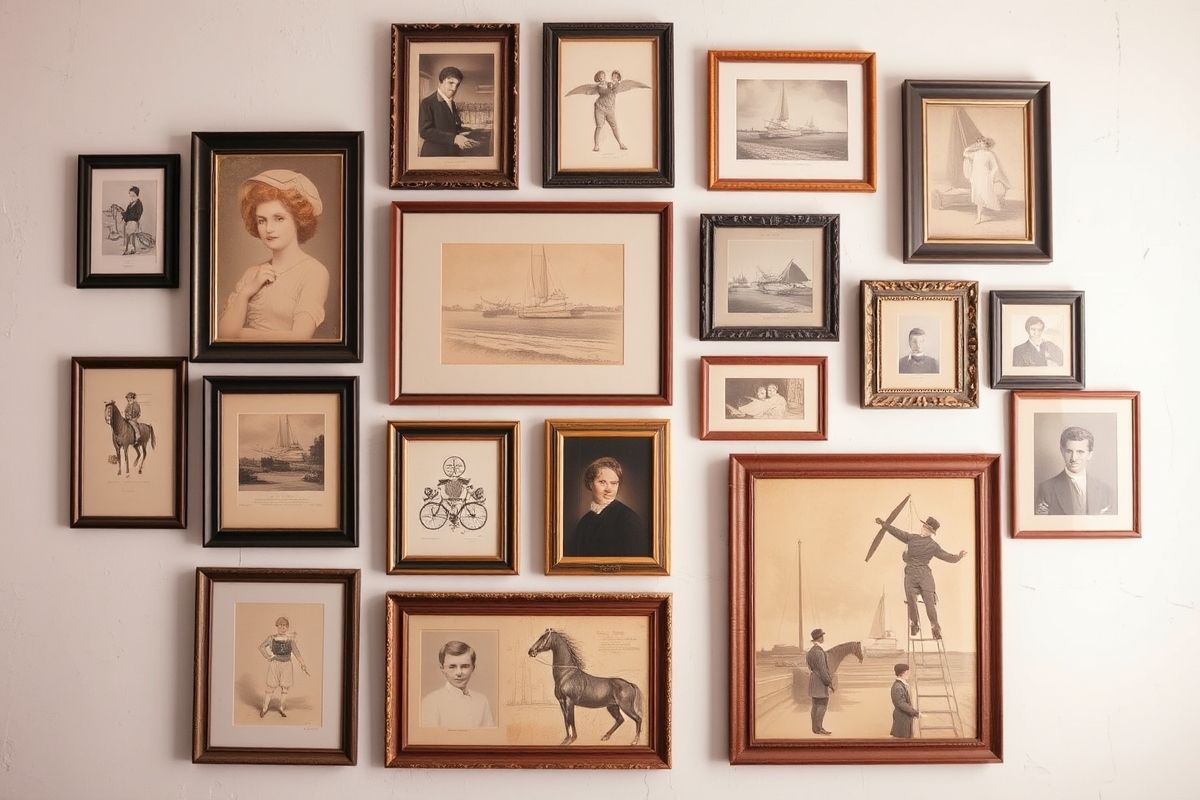
Vintage photographs, particularly those in sepia tones, possess an undeniable allure. Their muted hues evoke a sense of nostalgia and history, adding a touch of timeless elegance to any gallery wall.
Consider incorporating a collection of antique portraits, landscapes, or everyday scenes from the past. The key to a cohesive look with sepia tones is consistency in color. Aim for photographs with similar warmth and saturation to create a harmonious aesthetic.
Don’t be afraid to mix and match frame styles. While matching frames can create a sense of uniformity, incorporating frames with varying textures, materials, and embellishments can add visual interest. For sepia-toned photographs, consider frames made from dark wood, aged metal, or even vintage-inspired gilded options.
The contrast between the photograph’s soft tones and the frame’s texture can create a captivating visual effect. Remember to consider the size and scale of the photographs when choosing frames, ensuring they complement the artwork without overwhelming it.
2. Botanical Beauty: Pressed Flowers and Vintage Prints
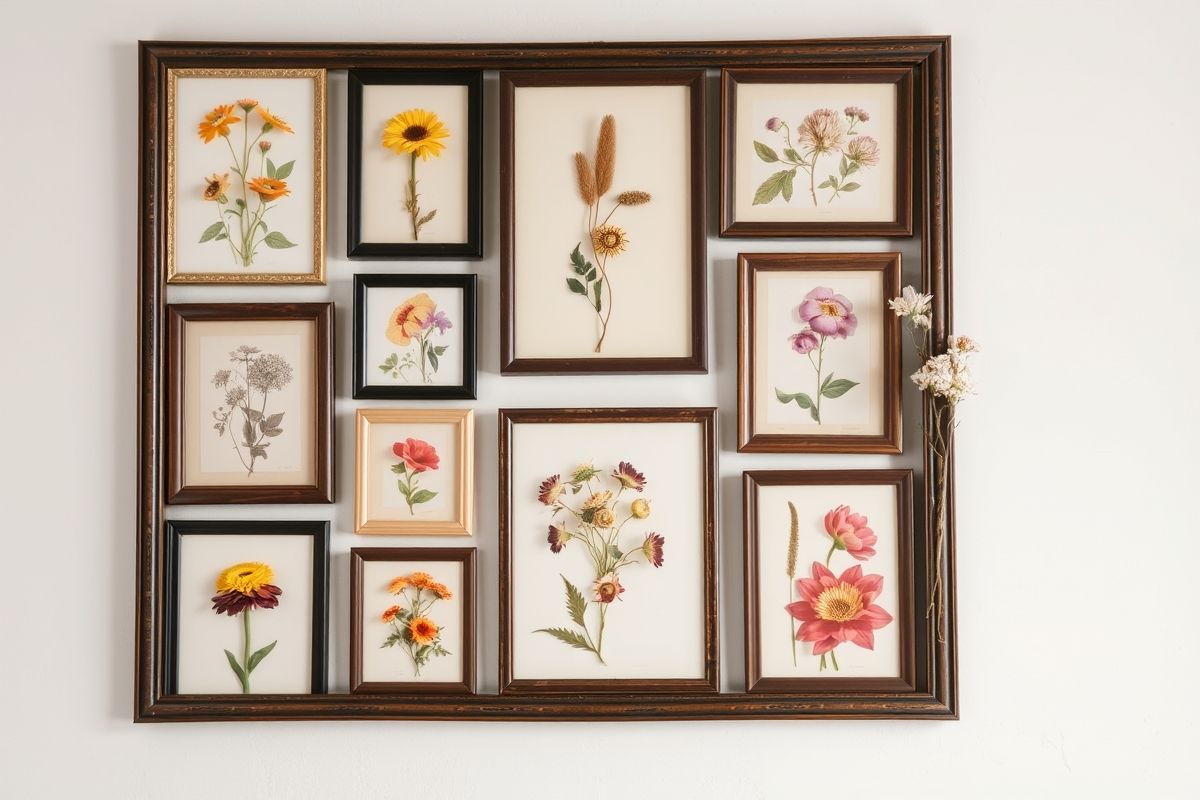
Botanical illustrations and pressed flowers are a classic choice for vintage gallery walls. They bring a touch of nature and serenity to your space, adding a delicate and refreshing element. Look for antique botanical prints featuring detailed illustrations of flowers, plants, and herbs.
These prints often feature intricate details and beautiful color palettes that can complement a variety of interior styles. Alternatively, consider pressing your own flowers and framing them for a truly unique and personal touch.
When incorporating pressed flowers, ensure they are properly dried and preserved to prevent damage over time. Consider using UV-protective glass in your frames to minimize fading and discoloration.
For botanical prints, look for options that are printed on aged paper or have a slightly distressed finish to enhance their vintage appeal. Combine botanical prints and pressed flowers with other vintage elements, such as antique maps or old books, to create a layered and visually rich gallery wall.
3. Maps of Yesteryear: Incorporating Antique Cartography
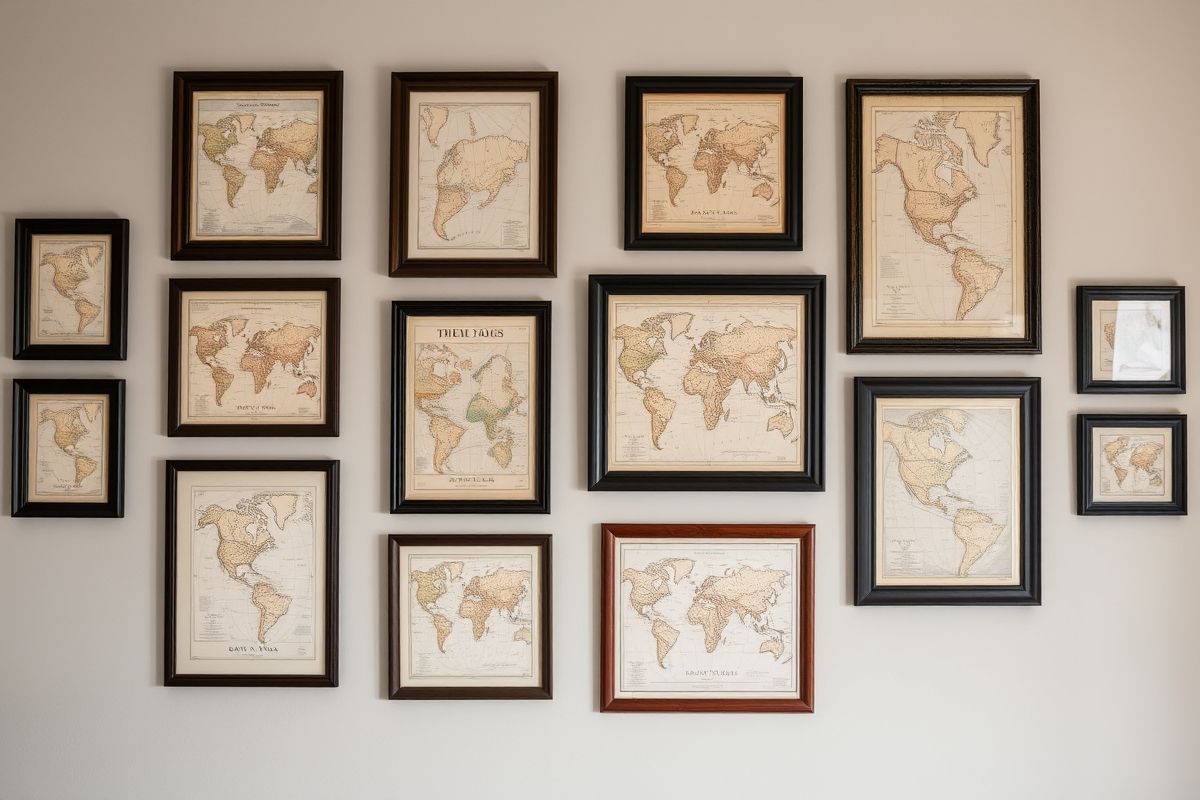
Antique maps are a fantastic way to add a sense of adventure and history to your vintage gallery wall. Their intricate details, aged paper, and faded colors evoke a sense of exploration and discovery.
Look for maps of your favorite cities, countries, or regions, or even maps of historical events or geographical features. The beauty of antique maps lies in their imperfections – the creases, tears, and faded ink tell a story of their own.
When incorporating antique maps, consider the size and scale of the maps in relation to the other elements on your gallery wall. Larger maps can serve as a focal point, while smaller maps can be used to fill in gaps and add visual interest.
Frame the maps in simple, understated frames to avoid detracting from their inherent beauty. Experiment with different framing styles, such as floating frames or frames with decorative corner embellishments, to add a touch of personality.
4. Letter Perfect: Vintage Typography and Ephemera
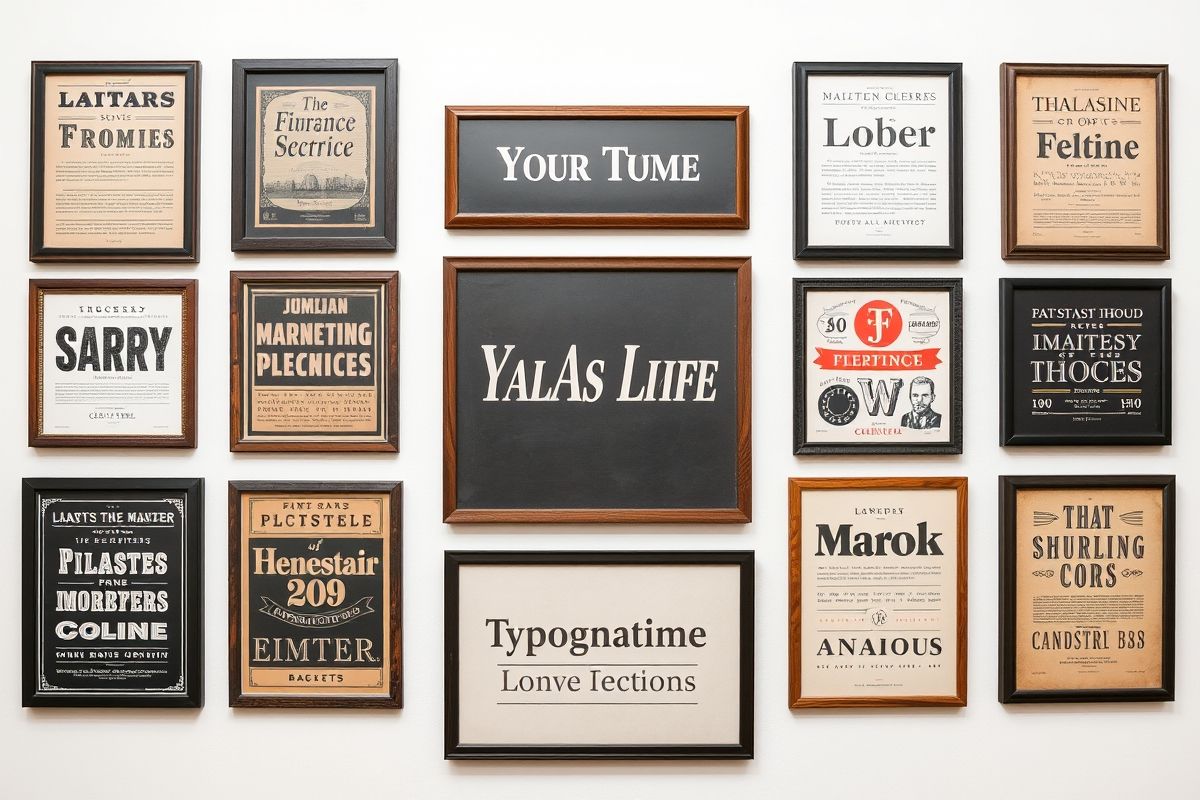
Adding vintage typography and ephemera to your gallery wall can create a unique and personalized display. Look for old signs, advertisements, letters, postcards, or even vintage packaging.
These items often feature unique fonts, designs, and illustrations that can add character and charm to your space. Consider incorporating items that have personal significance, such as a vintage postcard from a place you’ve visited or a letter from a loved one.
When incorporating vintage typography and ephemera, consider the color palette and overall aesthetic of your gallery wall. Look for items that complement the other elements in your display.
For example, if you have a gallery wall with a muted color palette, consider incorporating typography and ephemera with faded colors and distressed finishes. When framing ephemera, ensure they are properly protected from dust and sunlight to prevent damage over time.
5. The Charm of Chinoiserie: Asian-Inspired Vintage Prints
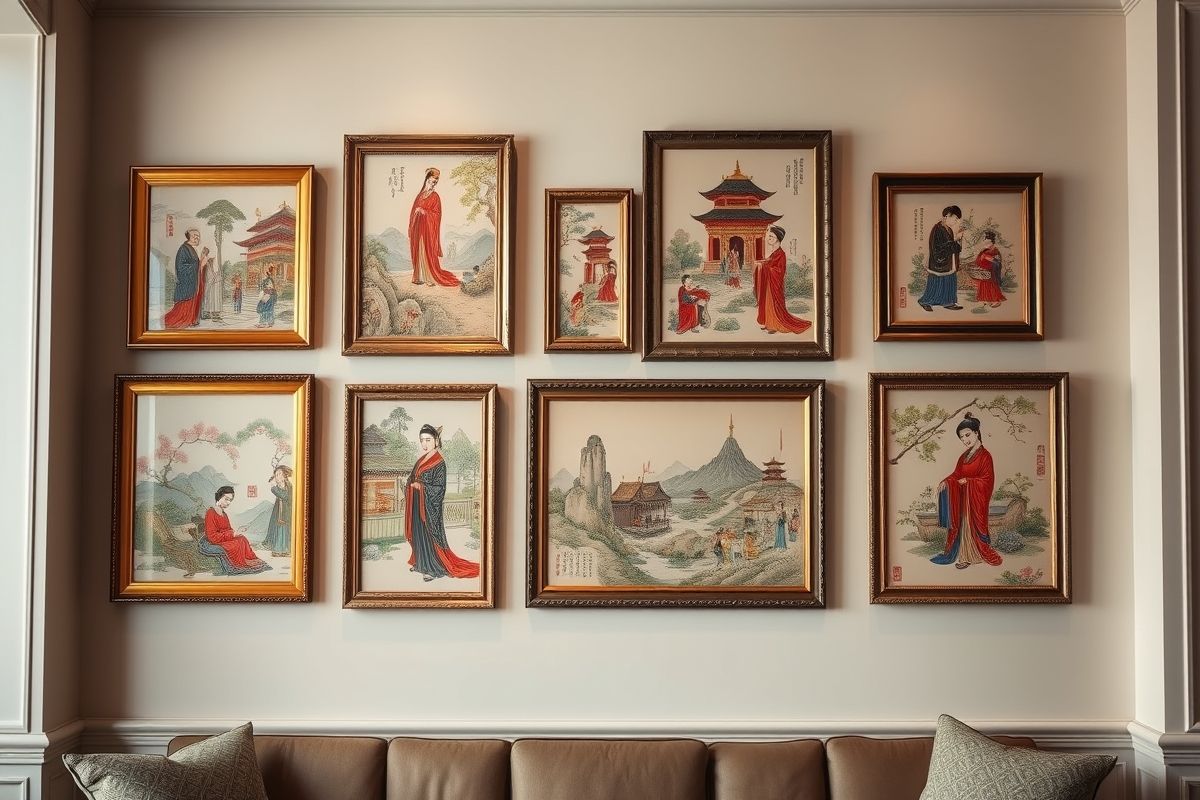
Chinoiserie, the European interpretation and imitation of Chinese and East Asian artistic traditions, offers a touch of exotic elegance to a vintage gallery wall. Look for vintage prints featuring scenes of Chinese landscapes, flora, fauna, and figures.
These prints often feature vibrant colors, intricate details, and a sense of whimsical charm. The use of gold accents is also a hallmark of Chinoiserie, adding a touch of luxury and sophistication.
When incorporating Chinoiserie prints, consider pairing them with other vintage elements that complement their aesthetic. For example, you could combine them with antique mirrors, ornate frames, or vintage porcelain figurines.
The contrast between the Chinoiserie prints and the other vintage elements can create a visually dynamic and interesting display. Don’t be afraid to mix and match different styles and eras to create a unique and personalized gallery wall.
6. The Art of Arrangement: Symmetrical vs. Asymmetrical Layouts
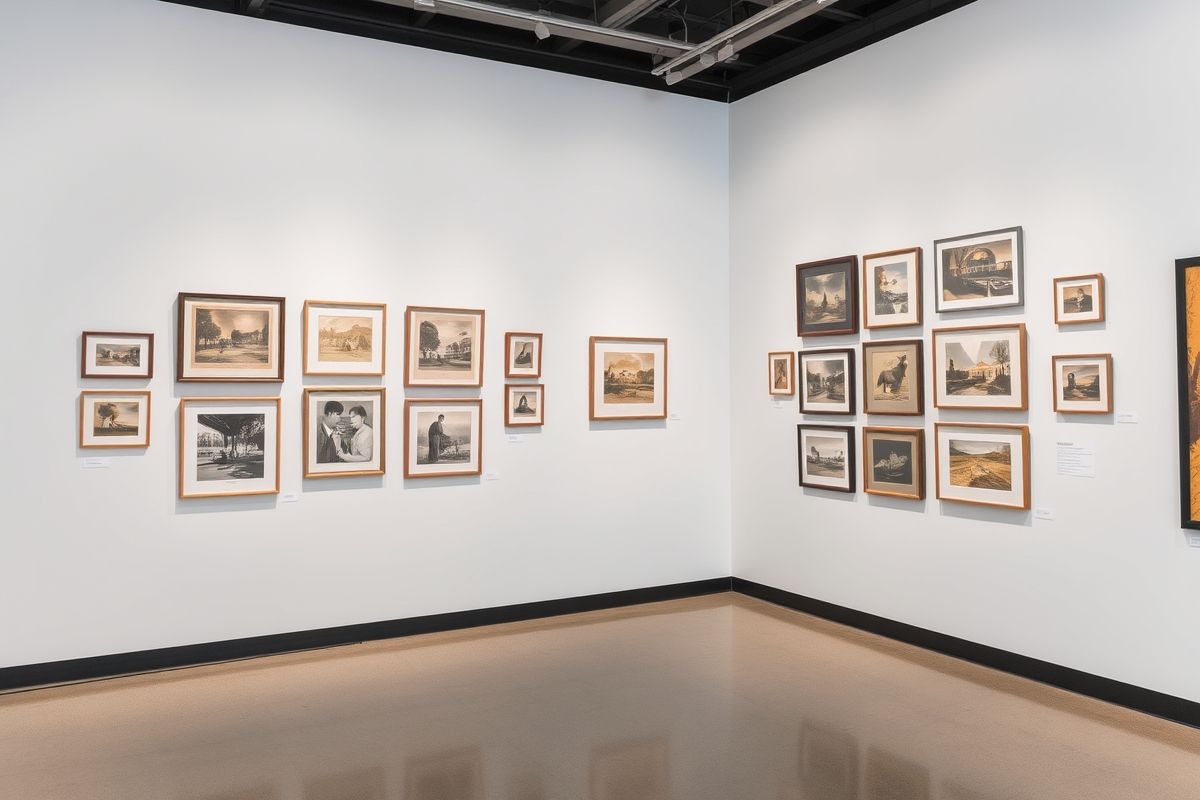
The arrangement of your vintage gallery wall is just as important as the artwork itself. There are two main approaches to arrangement: symmetrical and asymmetrical. A symmetrical layout features a balanced and orderly arrangement, often with a central focal point and identical elements on either side.
This approach creates a sense of formality and structure. An asymmetrical layout, on the other hand, is more free-flowing and organic, with elements arranged in a less structured manner. This approach creates a sense of visual interest and spontaneity.
When choosing between a symmetrical and asymmetrical layout, consider the overall style of your space and your personal preferences. A symmetrical layout might be a good choice for a more traditional or formal space, while an asymmetrical layout might be better suited for a more modern or eclectic space.
Experiment with different arrangements before committing to a final layout. Use painter’s tape or paper cutouts to visualize the arrangement on your wall before hanging the artwork.
7. Frame Frenzy: Mixing and Matching Frame Styles
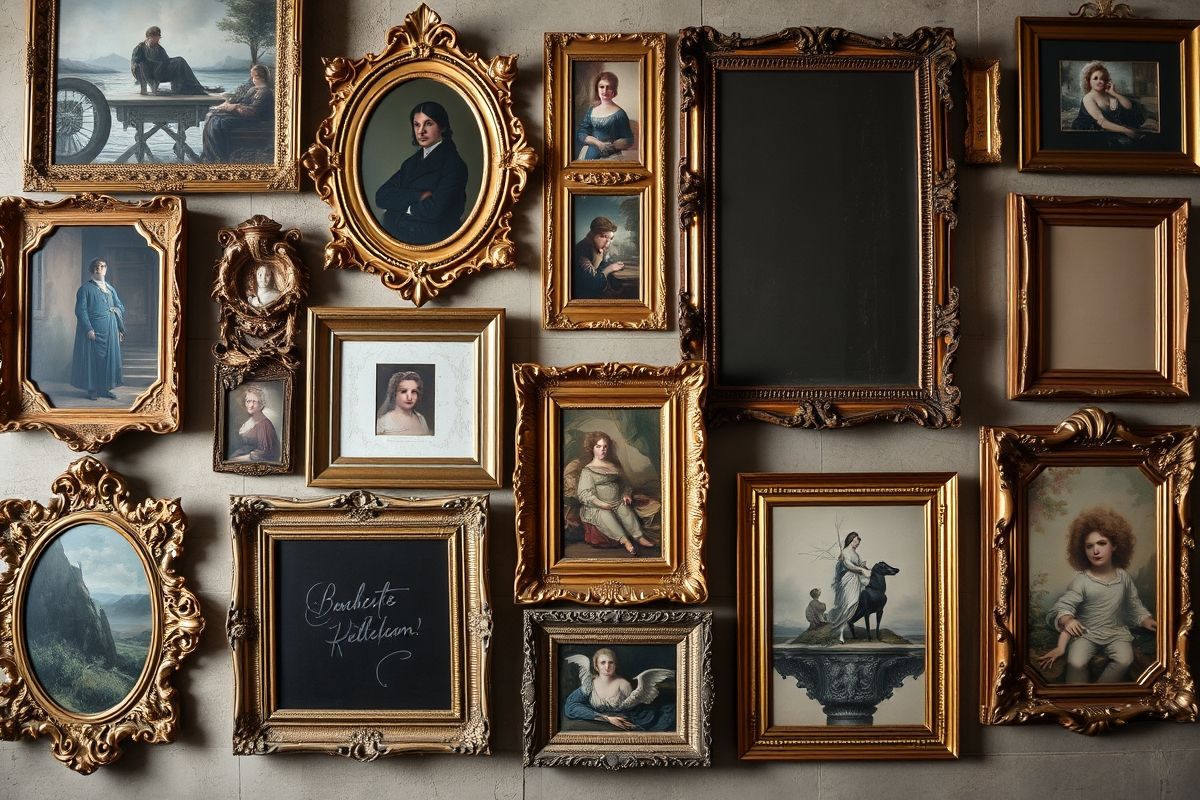
Don’t be afraid to mix and match frame styles when creating your vintage gallery wall. This can add visual interest and personality to your display. Experiment with different frame materials, such as wood, metal, and gilded options.
Consider incorporating frames with varying textures, embellishments, and sizes. The key to a cohesive look is to find a common thread that ties the frames together, such as a similar color palette or overall style.
For instance, you might choose to use frames with a similar level of distressing or aging to create a sense of continuity. Or you might opt for a mix of frames with varying textures but all within a similar color family.
Another option is to unify the frames by painting them all the same color. Remember to consider the artwork when choosing frames. The frame should complement the artwork without overwhelming it.
8. Beyond Paper: Incorporating Vintage Objects
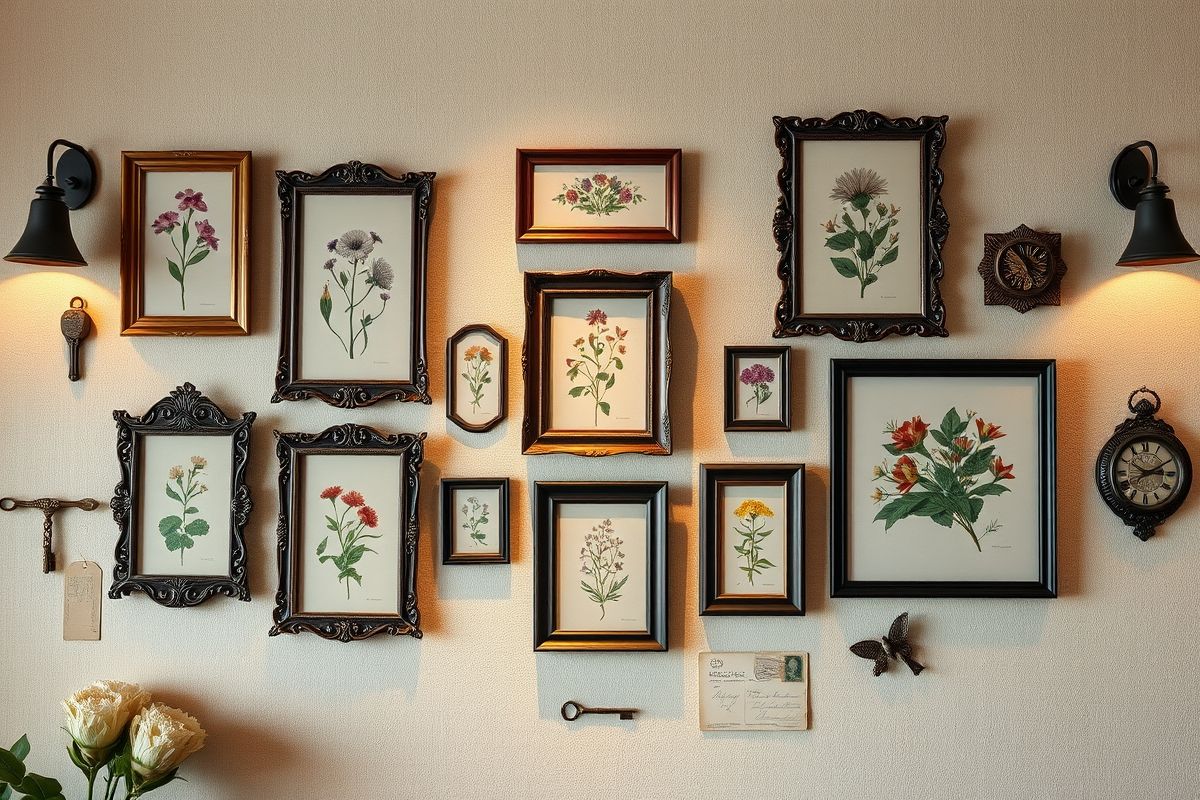
Think beyond paper artwork when creating your vintage gallery wall. Incorporating vintage objects can add depth, texture, and a unique dimension to your display. Consider adding vintage mirrors, clocks, plates, hats, or even small sculptures.
These objects can create a more dynamic and visually interesting gallery wall. When incorporating vintage objects, consider their size, weight, and how they will be attached to the wall.
Securely mounting vintage objects is crucial to prevent them from falling and causing damage. Use appropriate hanging hardware and ensure it is properly installed. Consider using shadow boxes or shelves to display smaller objects.
The key to incorporating vintage objects is to find items that complement the overall aesthetic of your gallery wall and that have personal significance. A collection of antique keys, a vintage pocket watch, or even a set of antique buttons can add a touch of personality and charm.
9. Color Coordination: Creating a Harmonious Palette
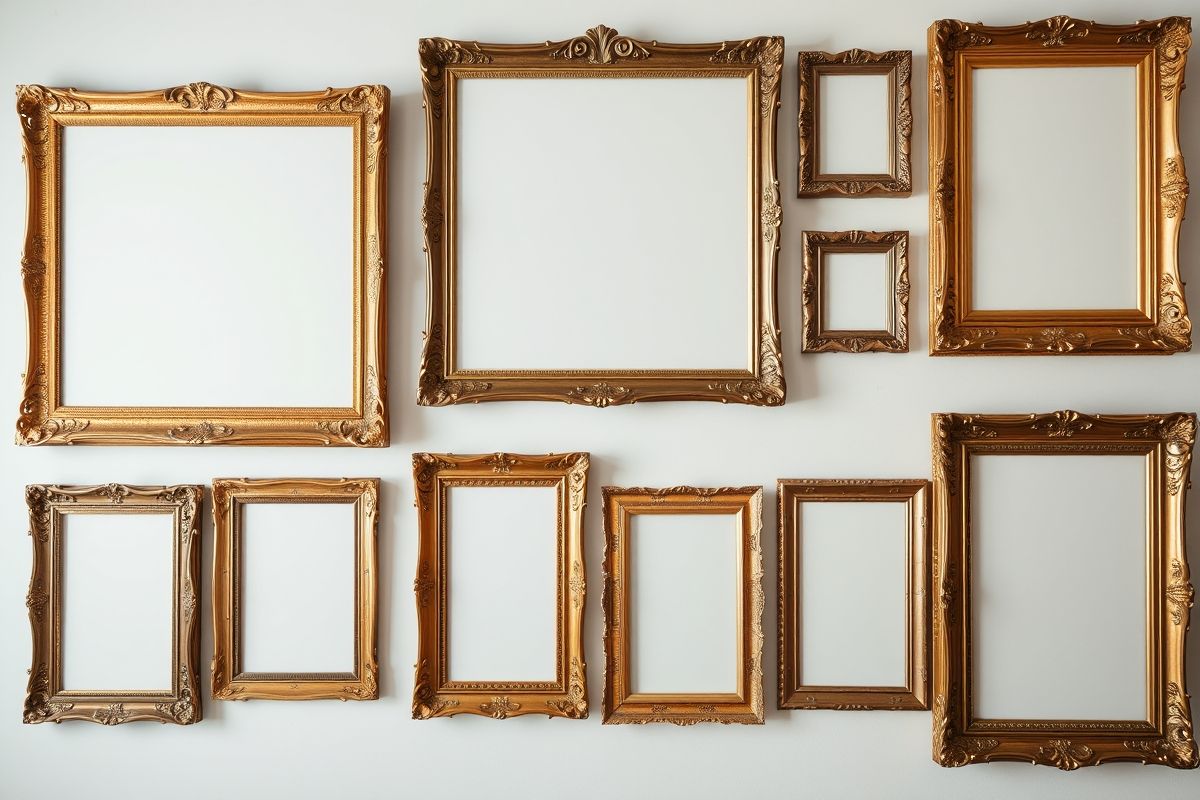
Color coordination is essential for creating a harmonious vintage gallery wall. Consider choosing a limited color palette to tie the different elements together. You might opt for a monochromatic palette, using different shades and tones of a single color, or a complementary palette, using colors that are opposite each other on the color wheel.
Alternatively, you could choose a more muted or neutral color palette, allowing the vintage artwork and objects to take center stage.
When choosing a color palette, consider the existing colors in your space. You want to choose colors that complement the room’s overall aesthetic. For instance, if your room has a warm color scheme, consider using warm-toned vintage artwork and objects.
If your room has a cool color scheme, consider using cool-toned vintage artwork and objects. Don’t be afraid to experiment with different color palettes until you find one that you love.
10. The Golden Age: Gilded Frames and Accents
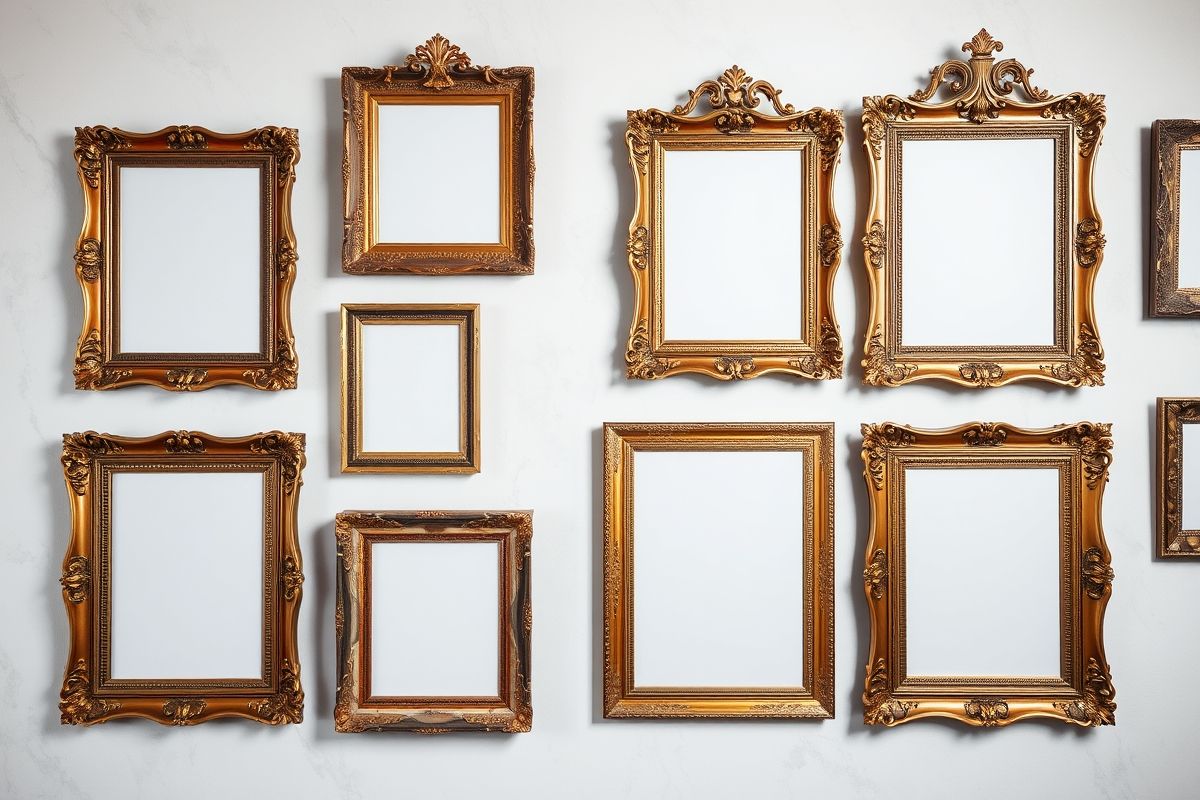
Gilded frames and accents add a touch of luxury and sophistication to a vintage gallery wall. The warm, shimmering tones of gold can create a sense of opulence and elegance. Consider incorporating frames with gilded details, such as gold leaf or gold paint.
You could also add gold accents to other elements on your gallery wall, such as vintage mirrors or small sculptures. The key is to use gold sparingly to avoid creating an overly gaudy look.
Pair gilded frames with vintage artwork and objects that complement their aesthetic. For example, you could combine gilded frames with antique portraits, Chinoiserie prints, or vintage mirrors.
The contrast between the gilded frames and the other vintage elements can create a visually stunning and impactful display. Consider using different shades of gold, such as antique gold, rose gold, or yellow gold, to add depth and dimension to your gallery wall.
11. Texture Tales: Incorporating Varied Textural Elements
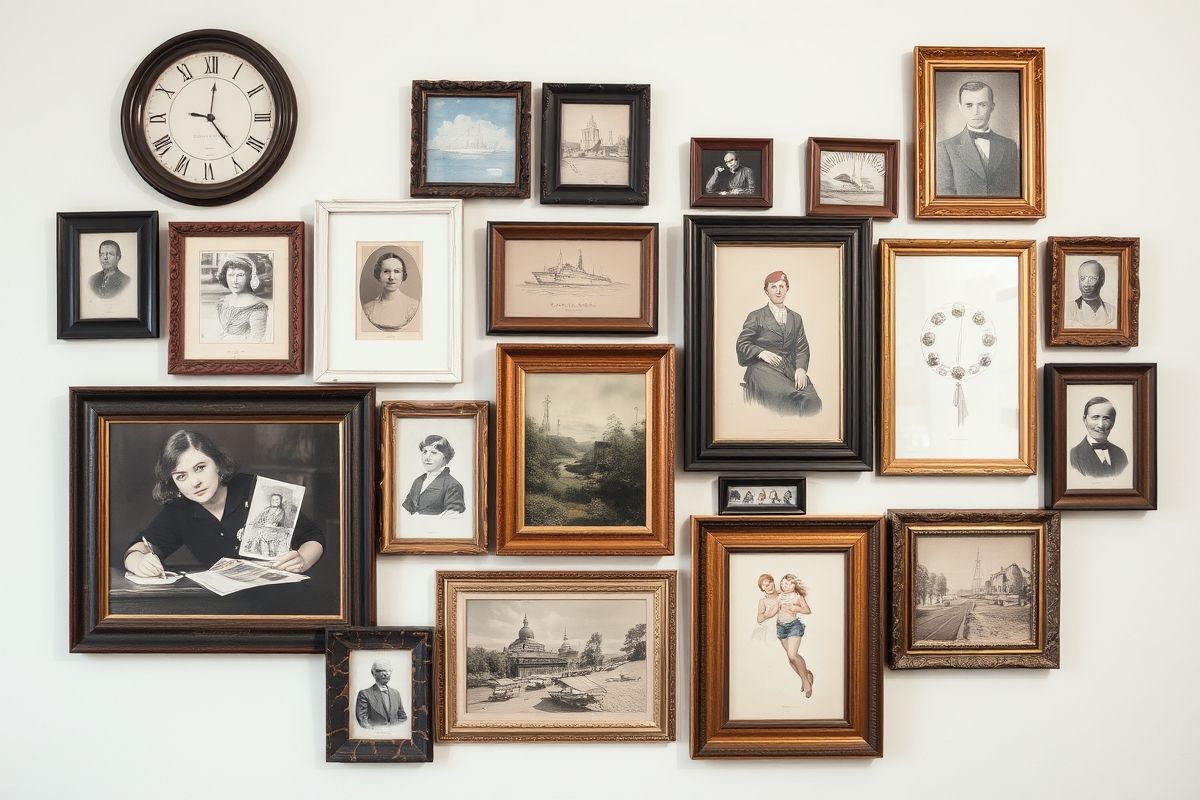
Adding textural elements to your vintage gallery wall can create a more dynamic and visually interesting display. Consider incorporating artwork and objects with varying textures, such as rough wood frames, aged paper, or woven fabrics. The contrast between the different textures can add depth and dimension to your gallery wall.
Look for vintage textiles, such as old tapestries, embroidered samplers, or even vintage handkerchiefs, that can be framed and incorporated into your display. Consider incorporating frames with textured surfaces, such as carved wood or embossed metal.
You can also add textural elements by incorporating objects with rough or uneven surfaces, such as antique pottery or vintage metal tools. The key is to find a balance between the different textures to avoid creating a chaotic or overwhelming display.
12. Finding Your Treasures: Where to Source Vintage Artwork
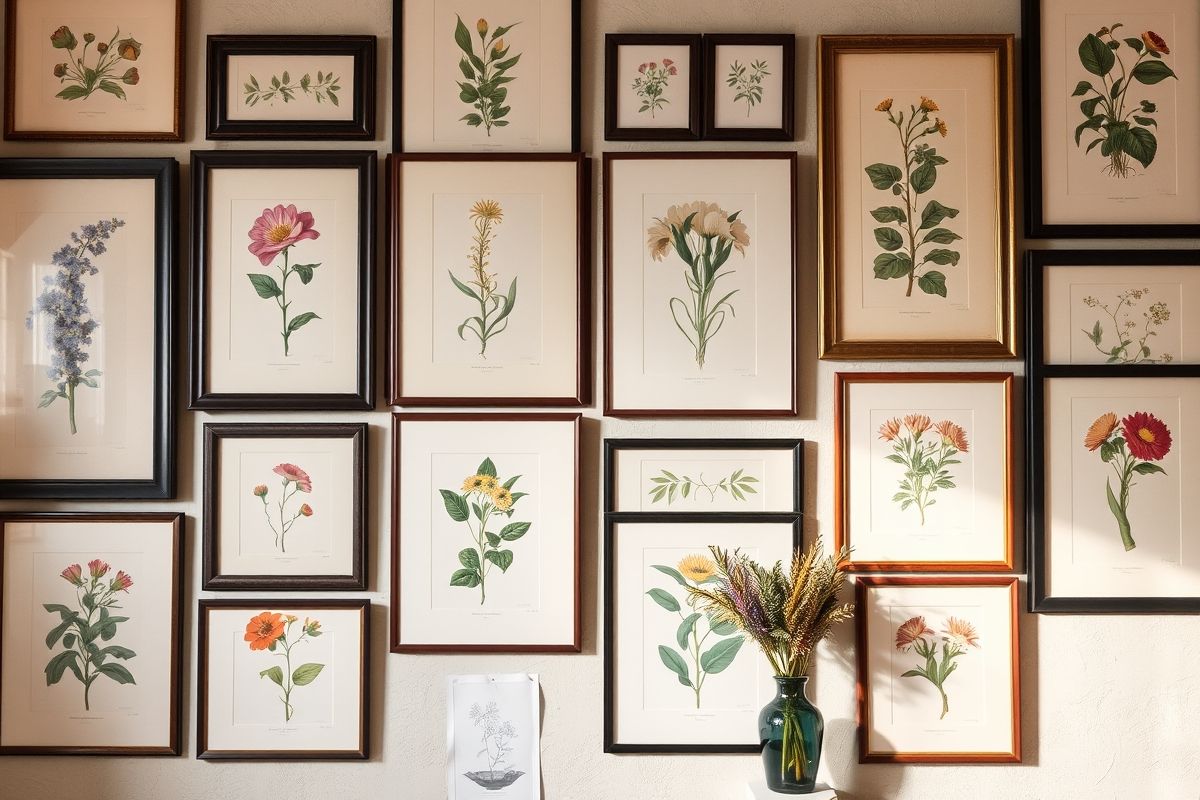
Sourcing vintage artwork for your gallery wall can be an exciting treasure hunt. Start by exploring local antique stores, flea markets, and estate sales. These venues often offer a wide variety of vintage artwork and objects at affordable prices. Online marketplaces, such as Etsy, eBay, and Chairish, are also excellent sources for vintage finds.
Don’t be afraid to dig deep and search for hidden gems. Be prepared to negotiate prices, and always inspect items carefully for damage or imperfections. Consider visiting local auctions or art galleries that specialize in vintage artwork.
These venues can offer higher-quality items, but they may also be more expensive. Remember to be patient and persistent in your search. Finding the perfect vintage pieces for your gallery wall may take time, but the effort will be worth it.
13. The Power of Personalization: Adding Sentimental Pieces
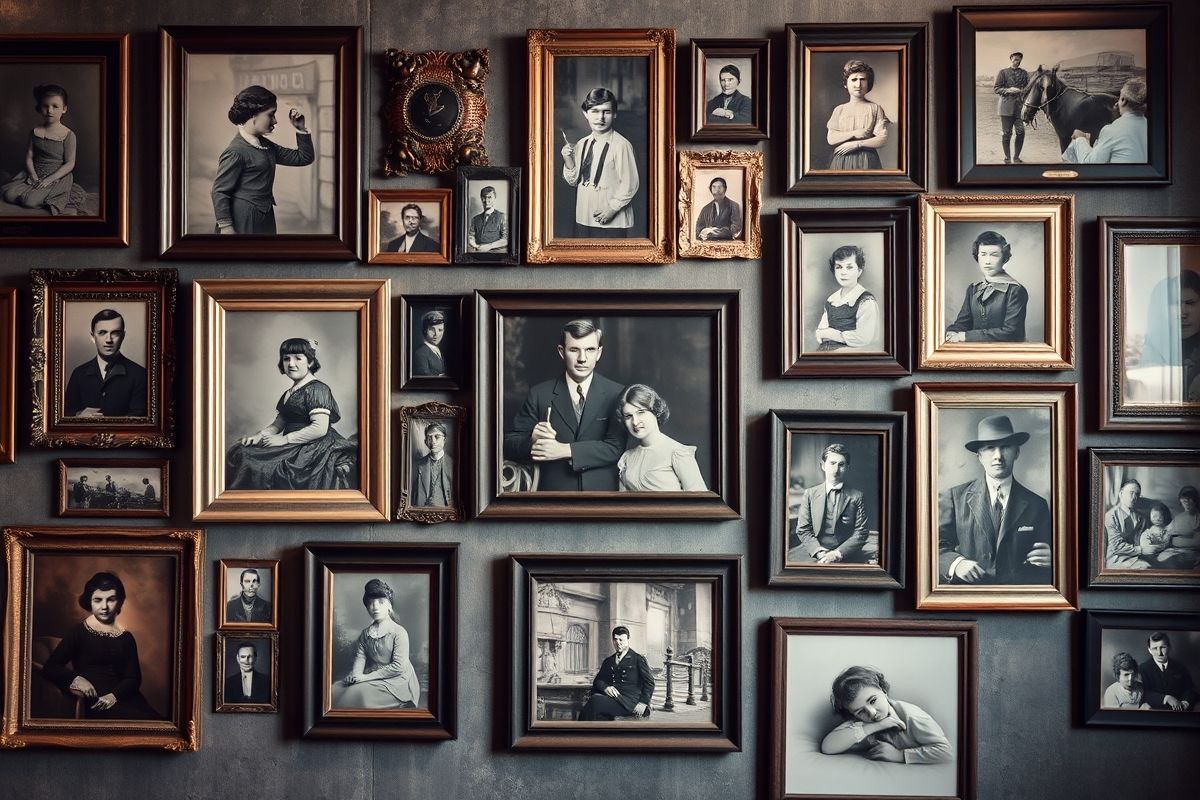
The most compelling vintage gallery walls are those that tell a story. Adding sentimental pieces with personal meaning can transform your wall from a decorative display to a cherished collection of memories. Consider incorporating family photographs, letters from loved ones, travel souvenirs, or even childhood artwork. These items will add a unique and personal touch to your gallery wall, making it a reflection of your life and experiences.
When incorporating sentimental pieces, be sure to protect them from damage. Frame photographs and letters behind UV-protective glass to prevent fading. Display souvenirs in shadow boxes or on shelves to protect them from dust and damage.
Consider creating a theme around your sentimental pieces. For example, you could create a gallery wall dedicated to your family history, featuring photographs and documents from different generations.
14. From Basement to Beauty: Repurposing Vintage Finds
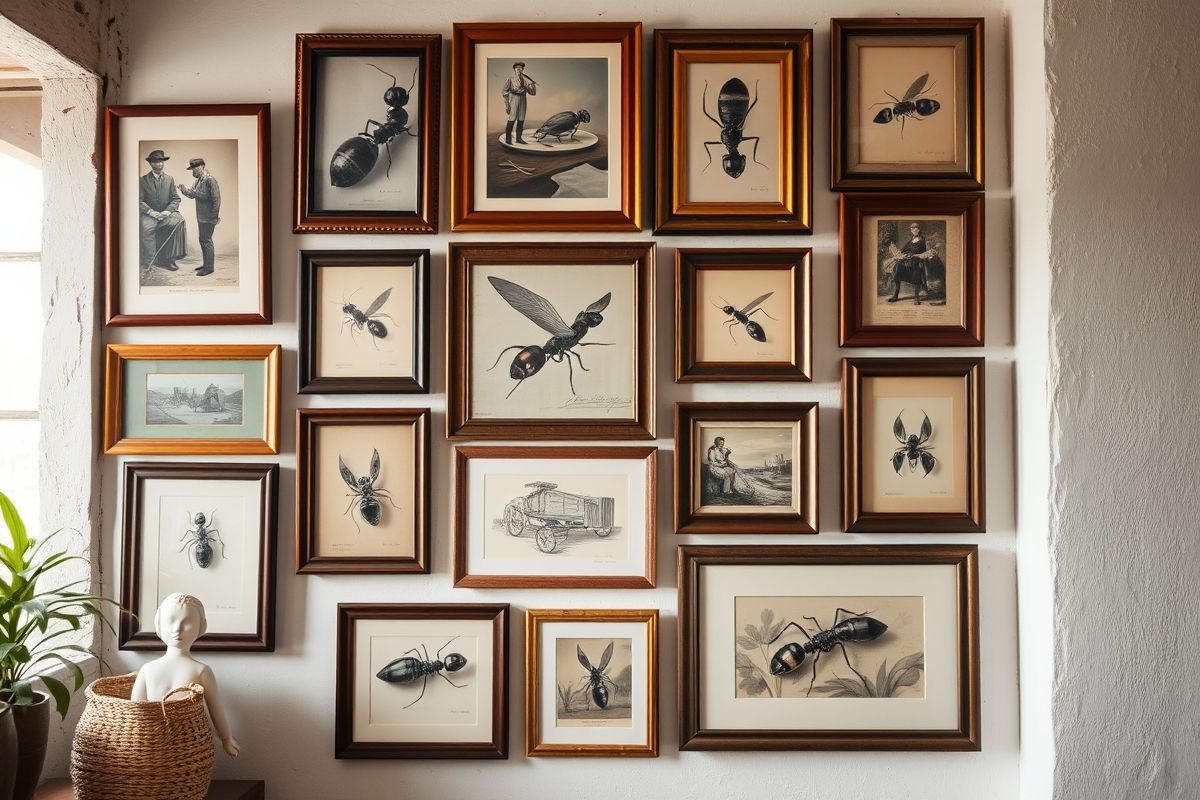
Repurposing vintage finds is a creative way to add unique and affordable elements to your gallery wall. Look for discarded items at flea markets, garage sales, or even in your own attic. Old windows, doors, and shutters can be transformed into frames for artwork or mirrors. Vintage trays, plates, and bowls can be hung on the wall as decorative accents.
Consider repurposing vintage fabrics, such as old quilts or tablecloths, to create wall hangings. You can also repurpose vintage jewelry, such as brooches and necklaces, to create unique and eye-catching decorations.
The key to successful repurposing is to think outside the box and to see the potential in discarded items. With a little creativity and effort, you can transform ordinary objects into extraordinary works of art.
15. Lighting the Past: Incorporating Vintage Lighting Fixtures
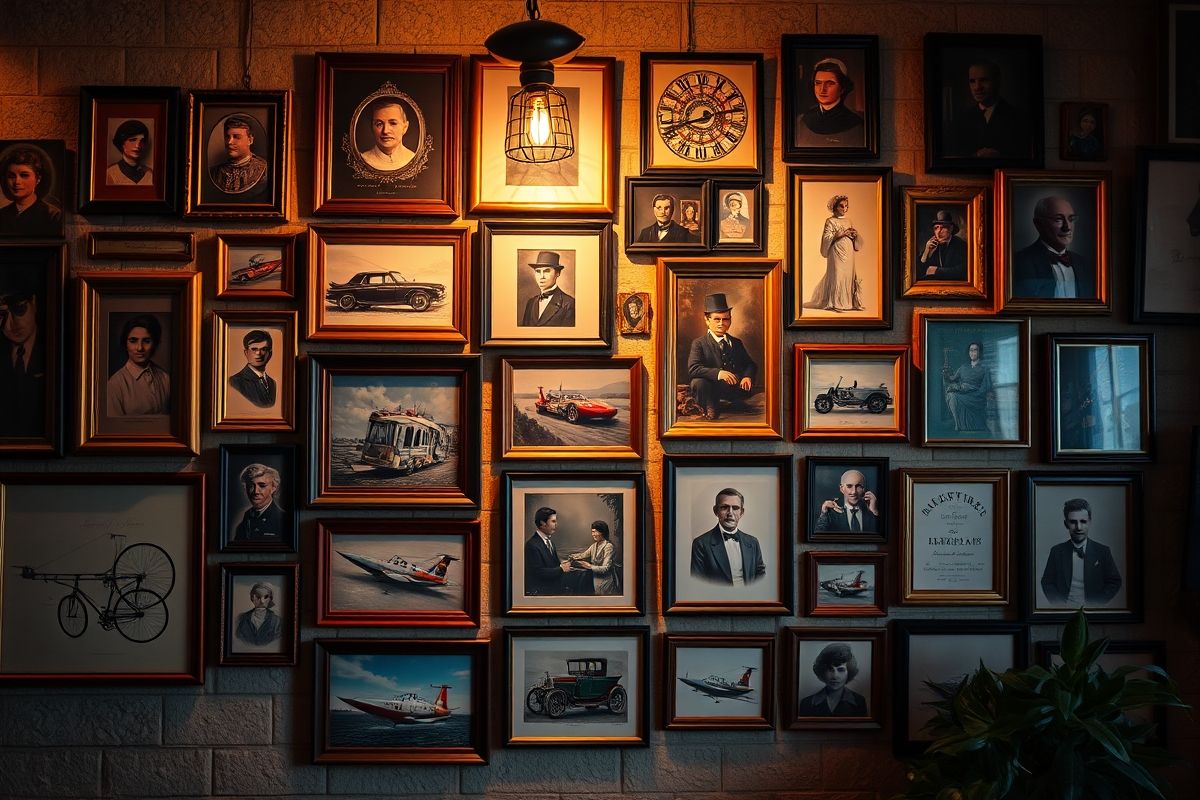
Adding vintage lighting fixtures to your gallery wall can create a warm and inviting atmosphere. Consider incorporating antique sconces, picture lights, or even string lights. These lighting fixtures can highlight specific pieces of artwork and add a touch of elegance to your display. When choosing vintage lighting fixtures, be sure to consider the electrical safety and wiring.
If you are not comfortable working with electrical wiring, consult a qualified electrician. Consider using LED bulbs in your vintage lighting fixtures to save energy and prolong the life of the bulbs.
Experiment with different lighting angles and intensities to create the desired effect. Soft, warm lighting can create a more intimate and inviting atmosphere, while brighter lighting can highlight the details of the artwork.
16. Creating a Focal Point: The Anchor Piece
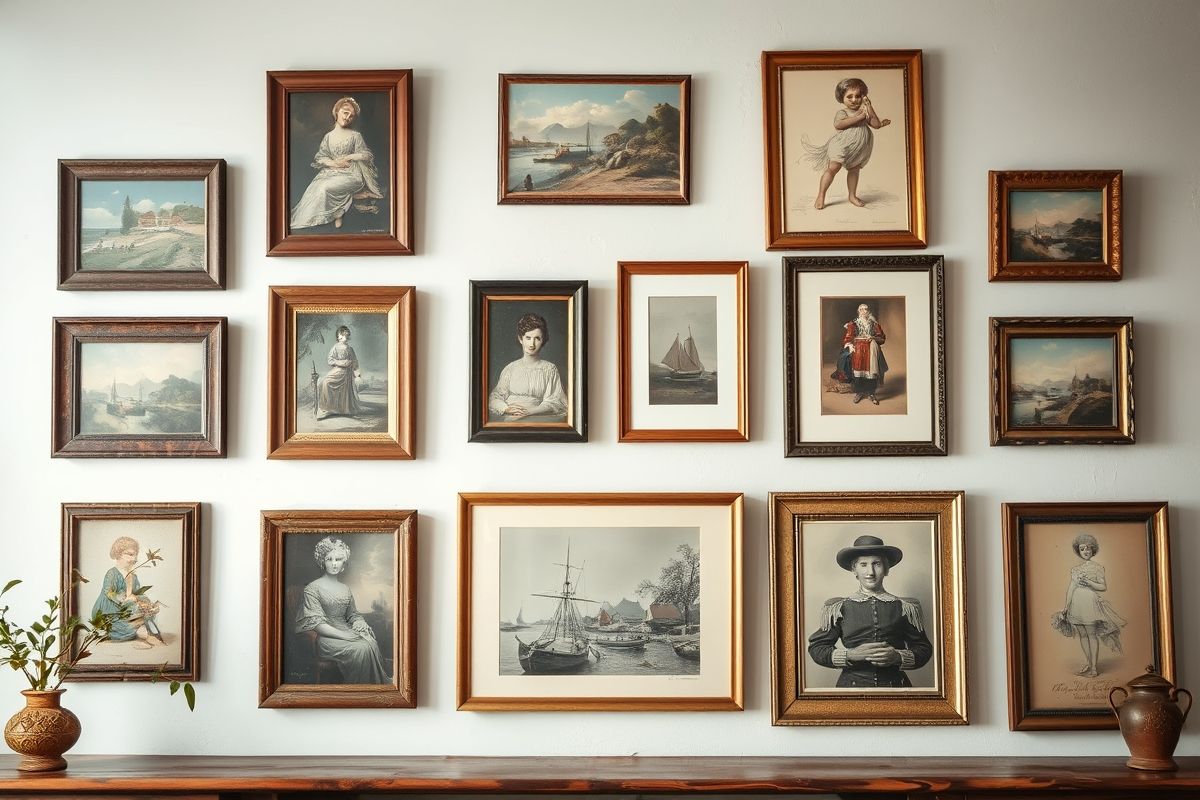
Every successful gallery wall needs a focal point, an anchor piece that draws the eye and sets the tone for the entire display. This could be a large piece of artwork, a vintage mirror, or even a grouping of smaller items. The focal point should be visually striking and should complement the overall aesthetic of your gallery wall.
Consider using a piece of artwork with a bold color or a unique design as your focal point. A large vintage mirror can also serve as an anchor piece, reflecting light and creating a sense of space.
Alternatively, you could create a focal point by grouping several smaller items together, such as a collection of vintage plates or a display of pressed flowers. The key is to choose a focal point that is visually appealing and that captures the essence of your gallery wall.
